Dr. David Schwartz is a founding partner of Innovative Science Solutions, LLC (ISS), a scientific consulting firm specializing in helping legal teams prevail in high-stakes litigation involving complex scientific principles. Dr. Schwartz has served as a consulting scientist to the legal industry for over 25 years and has provided support to cases involving environmental and occupational exposures, radiation, drugs, medical devices, dietary supplements, cosmetics, industrial chemicals.
But over the course of the past several years, Dr. Schwartz has focused on the role of genetics as an alternative cause in toxic tort litigation. As part of a strategic alliance, ToxicoGenomica, Dr. Schwartz and other ISS consultants have been providing consulting support on asbestos and talc cases focusing on genetic evidence as an alternative cause of mesothelioma and ovarian cancer.
In 2017, Dr. Schwartz (ISS), myself (A2L), and others co-hosted a pioneering conference on the subject of the role of genetics in civil litigation. Now two years later, I sat down with Dr. Schwartz to get a better understanding of how genetic science has evolved since then and how it is likely to change the way toxic tort cases will be litigated in the near future, specifically in talc and asbestos cases.
Q: Give us a quick summary as to how genomic science will change toxic tort litigation.
A: Modern medicine is advancing from broad-based treatment based on randomized controlled clinical trials to “precision medicine” where treatment is tailored to individual patients based on their genetic profile. Similarly, toxic tort litigation has been based on so-called black-box epidemiology studying large groups of people and trying to determine risk. We are bringing the field up to date by applying the tools of precision medicine to evaluate risk in toxic tort litigation. With genomics, we can directly ask if a person was born with genes that predispose them to develop a disease (like mesothelioma) instead of relying on statistical inferences from large populations. This is a watershed moment in toxic tort litigation.
Q: Talc litigation is heating up. Last I read, there were 14,000 claims filed related to talc. Do you think genetic science has a role in talc litigation?
A: Absolutely! Genetics provides a medically sound alternative cause argument no matter what the alleged injury: mesothelioma, lung cancer, ovarian cancer, lymphoma, autism. These conditions are all known to have well-established genetic underpinnings. If a defense lawyer can demonstrate that a plaintiff had a specific set of genetic factors, then it is legitimate to make the argument that the condition was caused by those factors.
Q: What is a genetic mutation?
A: A mutation, also referred to as a variant, is an error in the sequence of a gene that could drive specific types of cancer. A gene can have hundreds or thousands of different types of mutations. Some mutations have no known effect on a person’s life, while others will drive the onset of cancer.
Q: If genomic testing is already being used in precision medicine, has that information ever been used for litigation purposes?
A: Yes. Sometimes the genetic analysis at a hospital can be very informative. That’s especially true for cancer treatment at excellent cancer hospitals. Having the capability to review plaintiffs’ medical records for relevant genetic evidence will be a core skill set moving forward.
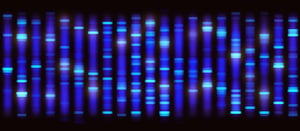 Q: What kind of samples are required to perform a genomic analysis?
Q: What kind of samples are required to perform a genomic analysis?
A: Blood samples are best; saliva or other tissues (including paraffin-embedded tissue) can be used in certain instances.
Q: Why not perform genetic sequencing with a commercial laboratory and then provide the results to my own expert witness?
A: Commercial laboratories are often quite good at a particular genomic analysis. However, they are not designed to provide the type of sequencing analyses required in high-stakes toxic tort litigation. If you happen to be lucky or skilled enough to pick the exact mutation (out of thousands or hundreds of thousands of possible mutations) that is the cause of the plaintiff’s cancer, a commercial lab might fit your needs. But this is not the case for most legal teams.
Q: What factors should lawyers look for to identify cases where genetics is a likely causative factor?
A: The ideal case would be a man or woman who developed cancer under age 50, with a family history of cancers and little or no known exposure to the exposure at issue in the case. We have found that peritoneal mesotheliomas are particularly linked to heritable, genetic factors.
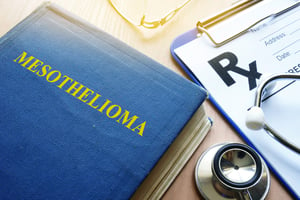 Q: Many asbestos lawyers have heard about the BAP1 “tumor suppressor” gene and mesothelioma. Should BAP1 be the sole focus of a genetic analysis in an asbestos case?
Q: Many asbestos lawyers have heard about the BAP1 “tumor suppressor” gene and mesothelioma. Should BAP1 be the sole focus of a genetic analysis in an asbestos case?
A: Absolutely not. We’ve seen cases in young people with multiple gene mutations, some of which were new and unexpected. We’ve seen cases in which a young person had inherited mutations that, in essence, caused the body to by itself cause other mutations than are known to drive cancer. We’ve seen cases in which a young person had inherited mutations that put them into the category of people who have inherited cancer syndromes, such as Lynch syndrome. In all these cases, there are multiple mutations that work in concert to explain the cancer observed in the plaintiff.
Q: So, are you saying that BAP1 mutations are NOT associated with mesothelioma?
A: Certain types of BAP1 mutations are absolutely associated with mesothelioma. Specifically, BAP1 mutations related to familial mesothelioma (as opposed to sporadic mesothelioma). However, the presence of BAP1 mutations alone is much less informative than understanding the role of multiple mutations in a patient with mesothelioma.
Q: What kind of genomic analysis do I need for my toxic tort case?
A: In our view, more information is always more powerful than less information. Therefore, most of the time, we encourage our clients to perform whole genome or whole exome sequencing. Nevertheless, there are times that gene panel testing can be utilized effectively, thus saving time and expense.
Q: What is the difference between whole genome sequencing and gene panel testing?
A: WGS or WES provides the sequence of the entire genome or exome. Gene panel testing (sometimes called multiplexing) selects a subset of genes to be tested for and provides determines whether the individual has a mutation in those particular genes.
Q: What is the difference between genetic susceptibility and genetic predisposition?
A: “Genetic predisposition” refers to the likelihood that an individual will develop a specific disease (e.g., cancer, birth defect, autoimmune disease) solely due to the genes one inherited from his parents. Such genetic predisposition occurs independent of environmental exposures and therefore defendants want to prove genetic predisposition as a defense. “Genetic susceptibility” on the other hand, refers to an increased likelihood that an external factor (e.g., an exposure to a toxicant) can cause an injury based on a person’s genes. Plaintiffs want to prove genetic susceptibility.
In many ways, toxic tort cases can turn into a battle between the defense assertion that an injury was entirely the result of genetic predisposition (i.e., the genes caused the injury) vs. the plaintiff assertion that an injury was the result of genetic susceptibility (i.e., the genes caused the toxin to cause the injury).
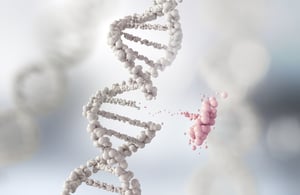 Q: Can genomics answer questions about past exposure to a substance?
Q: Can genomics answer questions about past exposure to a substance?
A: In some instances, yes. Biomarkers refer to characteristics that are objectively measured and evaluated as an indicator of biological processes. Genetic and other circulating molecules can function as biomarkers and are increasingly able to tell us about past exposures, including potentially asbestos, talc, benzene, and PFAS.
Q: What is epigenetics and is it important to a genomic defense?
A: Epigenetic findings refer to factors identified independent of the actual genetic sequence (the order of the base pairs: A, G, C, and T). These epigenetic factors can be used as part of a genetic defense and are examples of why it might be important to perform whole genome sequencing (as opposed to just whole exome sequencing).
Q: Can ToxicoGenomica assist with my case even if the plaintiff has a Foundation One medical report and no deleterious variants were identified?
A: Yes. Foundation One medical reports are primarily related to diagnostics and therapeutic options for a patient. They are typically not geared toward determining the cause of a cancer. In addition, many times, Foundation One medical reports only look at somatic tissue and therefore cannot tell anything about heritable germline mutations.
Other A2L Consulting articles related to talc litigation, asbestos, and the use of genetics in civil litigation include:
- Some Lessons for Defendants From the Talc Liability Trials
- Proving Alternative Mesothelioma Causation in Talc Cases
- With So Few Trials, Where Do You Find Trial Experience Now?
- 7 Key Takeaways from the Genetics in Civil Law Conference
- Free slide decks from the Genetics in Civil Law Conference
- Free E-Book: The Litigator's Guide to Combating Junk Science - 2nd Edition
- Repelling the Reptile Trial Strategy as Defense Counsel - Part 3 - Understanding the Bad Science
- The Importance of Litigation Graphics in Toxic Tort Litigation
- 10 Key Expert Witness Areas to Consider in Your Next Toxic Tort Case
- Free Download: Using Science to Prevail at Trial or As an Advocate
- 7 Reasons the Consulting Expert is Crucial in Science-Based Litigation
- Using Trial Graphics & Statistics to Win
- 12 Questions to Ask When Hiring a Trial Graphics Consultant
- Repelling the Reptile Trial Strategy as Defense Counsel - Part 1
- Teaching Science to a Jury: A Trial Consulting Challenge
- 5 Valuable (and Free) Complex or Science-Focused Litigation Resources
- Winning BEFORE Trial - Part 3 - Storytelling for Lawyers
- 7 Times When Litigation Graphics Hurt You
- Request a conflicts check with A2L Consulting about mock trials, litigation graphics, or trial technology.


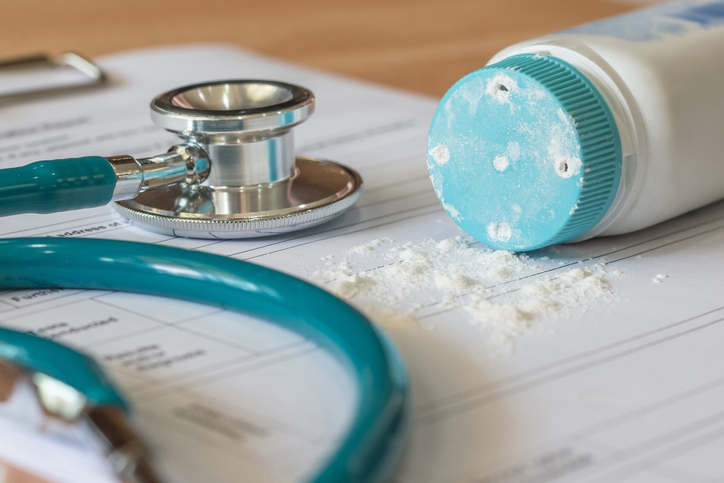

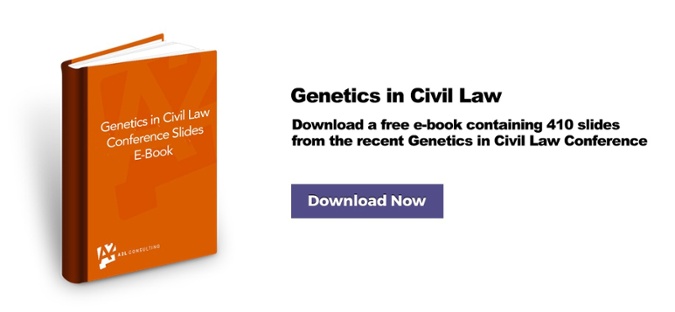

Leave a Comment